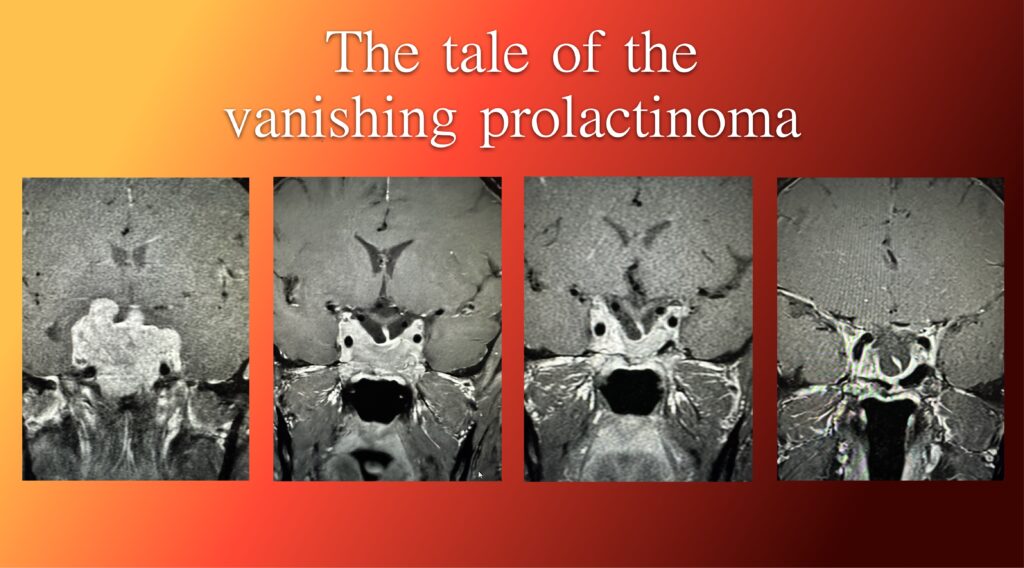From the desk of Dr. Lewis Blevins, co-founder – Prolactinomas in men tend to be large tumors and are often invasive. Studies have showed that about two-thirds of patients can experience demonstrable regression in the size of their lesions with dopamine agonist therapy. Some of these tumors regress in a very short time frame while others seem to take one or more years to decrease in size. Prolactin levels are said to fall by about 92% in patients with aggressive treatment. Unfortunately, however, this degree of fall in the hormone level does not always mean that it will be normal in response to treatment.
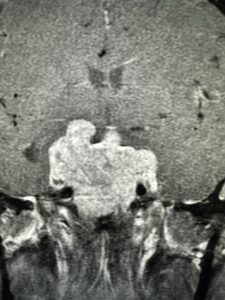
I first saw this 50-year-old man who presented with neurological complaints in 2021. MRI showed a large macroadenoma of the pituitary gland. Prolactin level was greater than 8000 ng/mL. He was treated with Cabergoline 0.5 mg twice weekly. Within a few weeks his prolactin level had decreased to 955 ng/mL. The cabergoline dose was increased to 1 mg twice weekly. Eight weeks later his prolactin was normal and measured 17 ng/mL.
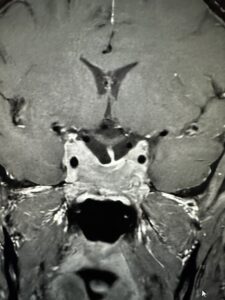
On chronic maintenance therapy with cabergoline his prolactin fell to 4.3 and has been maintained less than 5 ng/mL for almost three years. Tumor regression demonstrated by serial MRI studies is illustrated by the accompanying images. This type of dramatic response is more common than you might think. I have seen many patients whose tumors seem to “melt away.“ Interestingly, however, many of these tumors require several years of therapy to respond as demonstrated by this gentleman’s case.
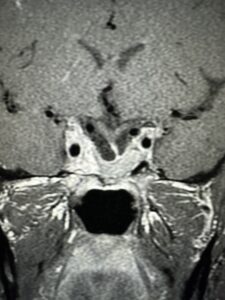
As a result, my recommendation is usually to normalize the prolactin, or decrease it as much as possible, with dopamine agonist drugs and then repeat an MRI six months after achieving the lowest prolactin level possible. Of course, we don’t wait that long in patients who fail to have improvement in visual field deficits or other mass effect symptoms.
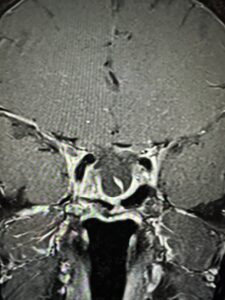
The point is that if mass effect symptoms and signs are not present give time for the medication to have an effect and induce tumor regression that could be measured on MRI. Don’t be in a hurry to get those imaging studies. Good things come to those who wait.
Graphics: PWN
© 2024, Pituitary World News. All rights reserved.
